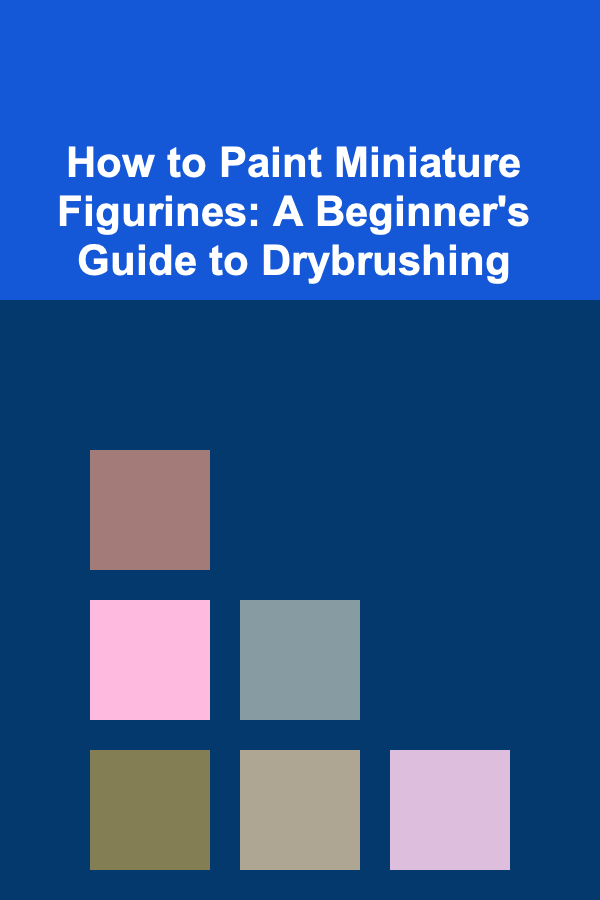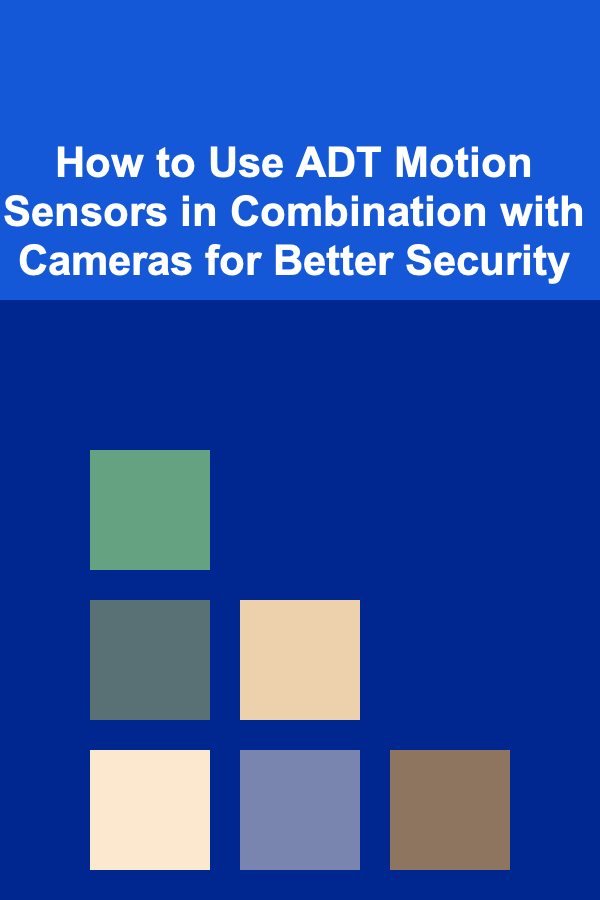
How to Paint Miniature Figurines: A Beginner's Guide to Drybrushing
ebook include PDF & Audio bundle (Micro Guide)
$12.99$5.99
Limited Time Offer! Order within the next:

Painting miniature figurines is an exciting and rewarding hobby that allows you to unleash your creativity, develop your artistic skills, and add a personal touch to the figures you paint. Whether you're working on models for tabletop games like Warhammer or simply enjoying the art of miniature painting, mastering drybrushing is a fundamental technique that can significantly enhance the quality of your work.
In this beginner's guide, we'll dive into the art of drybrushing -- an essential method used to highlight raised details and bring depth to your miniatures. We'll cover everything you need to know, from understanding drybrushing to selecting the right materials and techniques. By the end of this guide, you'll have a solid foundation in drybrushing that will elevate your miniature painting skills.
What is Drybrushing?
Drybrushing is a painting technique used to create highlights on raised surfaces of a miniature figurine by applying a small amount of paint onto a dry brush. The technique is primarily used to emphasize textures, add depth to your model, and give it a more dynamic, realistic appearance.
The key to successful drybrushing is the amount of paint you use. When drybrushing, you use very little paint and apply it lightly across the surface of the model. The goal is to catch only the raised details, leaving the recesses untouched. This creates a high-contrast effect that draws attention to the important features of the miniature.
Why Drybrushing is Important for Miniature Painting
Drybrushing is an essential tool in a miniature painter's toolbox because it serves several important purposes:
Highlighting Raised Details
Miniatures often have a lot of intricate details, such as armor plates, folds in clothing, textures, and facial features. Drybrushing helps to make these details stand out by highlighting them with a lighter color, which can give your miniatures more depth and visual appeal.
Adding Depth and Contrast
When done correctly, drybrushing can help bring out the contrast between the raised and recessed areas of the model, creating a more dynamic look. This depth is important for giving your miniatures a more realistic, three-dimensional appearance.
Quick and Efficient Technique
Drybrushing is a relatively fast technique compared to other methods like layering or glazing. It's perfect for highlighting large areas of the model quickly, which is particularly helpful when you have many miniatures to paint.
Choosing the Right Tools for Drybrushing
Before you start drybrushing, it's essential to gather the right tools. Using the correct materials will make the process easier and more effective.
1. Brushes
Drybrushing requires a specific type of brush. The ideal brush for drybrushing is a stiff, flat, or angled brush with a good amount of surface area. While you can use a variety of brush shapes, most painters prefer flat brushes or drybrush-specific brushes, which have stiffer bristles that help apply the paint in a controlled way.
Tips for Brushes:
- Small to medium-sized flat brushes are commonly used for drybrushing. A size 1, 2, or 3 brush works well for most miniatures.
- Drybrush-specific brushes have firmer bristles and are specifically designed for drybrushing. These can be purchased at most hobby stores and online.
- You might also use round brushes if you need more precision for detailed areas like faces or small features.
2. Paint
The paint you use for drybrushing is also important. While you can use any paint for drybrushing, it's recommended to use acrylic paints because they dry quickly and are easy to control. For drybrushing, you should use paints that are a few shades lighter than the base color of your miniature.
Tip: If you're working with a model that has a base coat of dark colors, you'll want to use lighter colors for drybrushing to create contrast. Light browns, grays, and off-whites work well for many types of models.
3. Paper Towel or Cloth
After loading paint onto your brush, you need to remove excess paint to ensure the drybrush effect is subtle. A paper towel or cloth is perfect for wiping off the excess paint. Simply dip your brush in the paint, then wipe it on the towel until most of the paint is gone.
4. Palette
While you can work directly from the paint pots, it's recommended to use a palette. This allows you to control the amount of paint you're using and helps avoid contaminating your main paint pots with excess pigment.
Basic Drybrushing Technique
Now that you've gathered your tools, let's go through the step-by-step process of drybrushing a miniature figurine.
Step 1: Prepare Your Miniature
Start by ensuring your miniature is clean and primed. You can use a spray primer to provide a base coat for the paint to adhere to. Lightly prime the model with a neutral color like gray, black, or white, depending on the overall tone you want to achieve.
- Gray Primer: Great for showcasing lighter colors and bright highlights.
- Black Primer: Ideal for darker miniatures or when you want to create deep shadows.
- White Primer: Perfect for achieving bright, vibrant colors and highlighting details.
Step 2: Load Your Brush
Dip your brush into the paint, then blot it on a paper towel or cloth to remove most of the paint. The goal is to leave only a small amount of paint on the brush---just enough to catch the raised details of the miniature.
- Note: The key to effective drybrushing is using minimal paint. If the brush is too wet or loaded with too much paint, the drybrushing technique won't work as intended.
Step 3: Apply Drybrushing
Hold your brush at a slight angle and lightly drag it across the raised areas of your miniature. You should aim to brush against the texture of the model, allowing the paint to catch only the highest points of detail. Use a back-and-forth motion or a circular motion, depending on the surface you're painting.
- Tip: Start with light, thin coats of paint. You can always add more layers if you want more intense highlights.
Step 4: Build Up Layers
Drybrushing is usually done in several light layers. After the first layer of paint dries, repeat the process with a slightly lighter color. This helps to build up depth and contrast.
- Tip: For a more pronounced highlight, choose a paint color that's a few shades lighter than your base coat. You can also experiment with adding white or lighter tones to your paint to create sharp contrasts.
Step 5: Focus on Key Areas
You don't need to drybrush every part of the model. Focus on areas that would naturally catch the light, such as the tops of armor, raised facial features, and edges of clothing. Drybrushing is perfect for highlighting edges and sharp details, so you don't have to worry about covering the entire model.
- Tip: You can use a more concentrated drybrush technique on areas like the shoulders, chest, or any raised ridges to make those details stand out even more.
Step 6: Clean Up
Once you've completed your drybrushing, take a moment to step back and evaluate your miniature. If you feel the highlights are too harsh, you can soften them by gently going over the model with a dry brush that has no paint on it. This will smooth out the transitions between colors.
Advanced Drybrushing Techniques
Once you've mastered the basics, you can try more advanced drybrushing techniques to take your miniatures to the next level. These techniques allow you to add finer details and more complex highlights, giving your models a realistic and professional finish.
1. Two-Stage Drybrushing
Two-stage drybrushing involves applying two different colors in quick succession. This technique is often used for creating more depth in the highlights. The first stage involves applying a medium highlight color to the raised areas, and the second stage applies a lighter color for the final highlights.
2. Wet-Blending and Drybrushing Combination
Some painters combine wet-blending and drybrushing to create a smoother, more natural transition between colors. Wet-blending involves blending two wet paints on the model's surface, and drybrushing is used afterward to highlight raised areas. This combination allows for both smooth gradients and bold highlights.
3. Multi-Layer Drybrushing
Instead of applying one or two layers of drybrush paint, multi-layer drybrushing involves using several layers of progressively lighter colors. This technique works well for models that need more intricate highlighting, such as fabric or skin, to create a natural, layered effect.
Common Drybrushing Mistakes to Avoid
As with any painting technique, there are a few common mistakes that beginners make when drybrushing. Here are some tips on how to avoid them:
1. Using Too Much Paint
If you apply too much paint on your brush, the effect will be too harsh and sloppy. Always start with a small amount of paint and gradually build up layers.
2. Failing to Remove Excess Paint
Failing to blot your brush properly will result in streaks or heavy layers of paint on the miniature. Ensure you wipe the brush until it is almost dry before you begin drybrushing.
3. Over-Drybrushing
It's easy to get carried away with drybrushing, but applying too many layers or brushing too many areas of the model can create a harsh, unnatural look. Stick to the raised surfaces, and be gentle with the layers.
4. Not Focusing on Key Details
Don't drybrush every single area of the miniature. Focus on the key details and raised surfaces to create contrast and emphasize the important features.
Conclusion
Drybrushing is one of the most accessible and rewarding techniques for painting miniatures. It allows you to highlight important details, add depth, and make your miniatures look more dynamic without requiring advanced painting skills. By following the basic steps and practicing regularly, you'll soon master drybrushing and take your miniature painting to the next level.
Remember, patience is key. Start with simple models and gradually work your way up to more complex pieces. With time and practice, you'll develop your unique style and create miniatures that are truly works of art. Happy painting!
Reading More From Our Other Websites
- [Tiny Home Living Tip 101] Best DIY Composting Toilets for Tiny Home Residents Who Want Sustainable Waste Management
- [Home Holiday Decoration 101] How to Create a Romantic Valentine's Day Home Decor Setup
- [Home Party Planning 101] How to Plan a Perfect Home Cocktail Party
- [Paragliding Tip 101] Safety First: Must-Have Paragliding Gear and How to Inspect It Before Every Flight
- [Organization Tip 101] How to Create an Outdoor Wellness Sanctuary
- [Home Holiday Decoration 101] How to Make Your Own DIY Holiday Ornaments
- [Tie-Dyeing Tip 101] How to Achieve Photographic Tie‑Dye Prints on Canvas Fabrics
- [Digital Decluttering Tip 101] Best Guidelines for Archiving Chat History in Remote Work Environments
- [Weaving Tip 101] Weaving Words: A Step‑By‑Step Guide to Creating Hand‑Bound, Fabric‑Covered Books
- [Personal Investment 101] Building AI Tools with Deep Learning to Generate Recurring Income

How to Add Lighting to Your Home Without Spending Much
Read More
How to Craft a Winning Resume: Tips and Templates
Read More
How to Create a Checklist for Monitoring Post-Migration Analytics
Read More
How to Use ADT Motion Sensors in Combination with Cameras for Better Security
Read More
How to Launch a Landscaping or Gardening Business: A Comprehensive Guide
Read More
How to Repair Common Violin Issues Yourself
Read MoreOther Products

How to Add Lighting to Your Home Without Spending Much
Read More
How to Craft a Winning Resume: Tips and Templates
Read More
How to Create a Checklist for Monitoring Post-Migration Analytics
Read More
How to Use ADT Motion Sensors in Combination with Cameras for Better Security
Read More
How to Launch a Landscaping or Gardening Business: A Comprehensive Guide
Read More